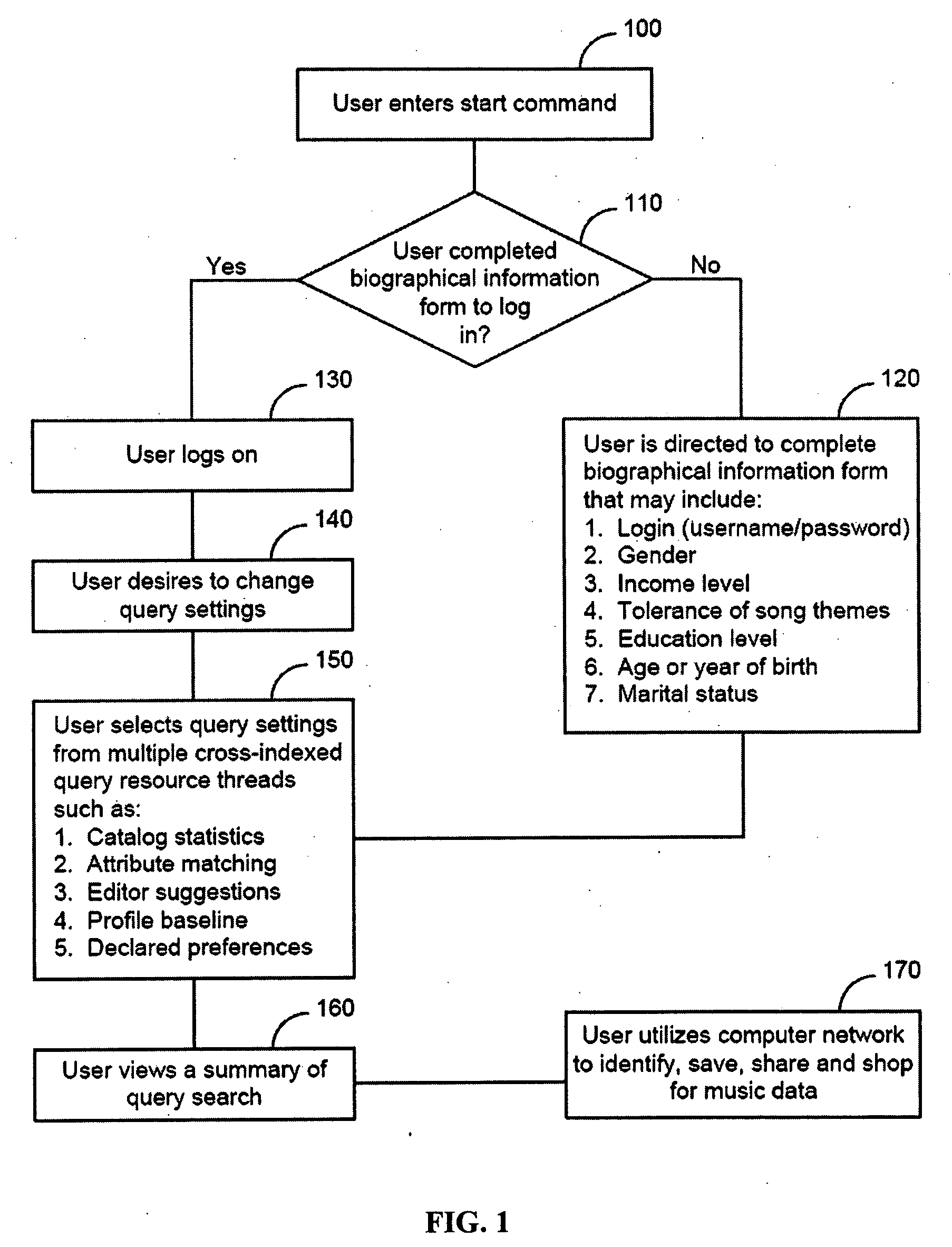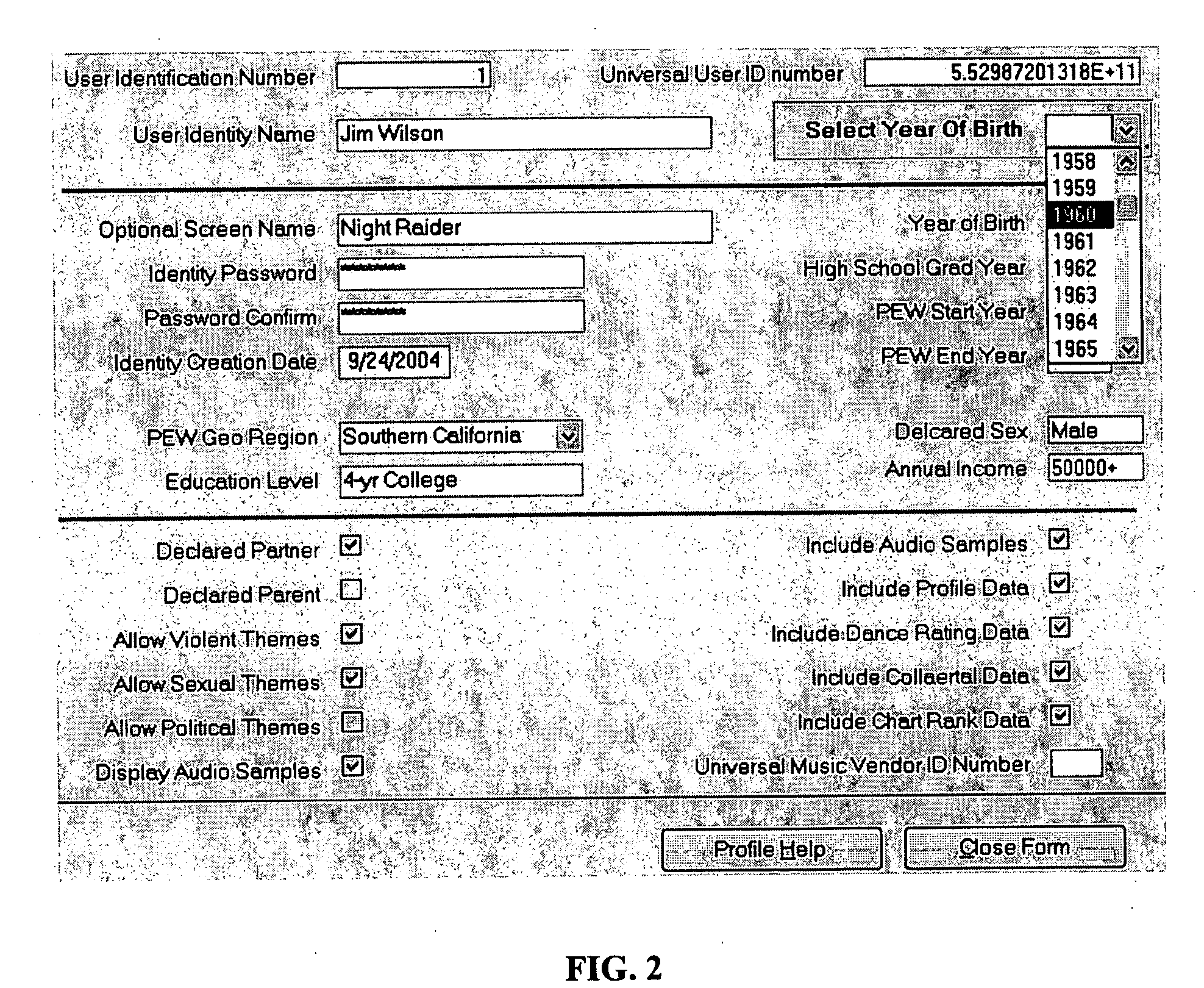However, it is unlikely that any person, no matter how avid a music lover, would listen to all 2 million songs.
In the absence of a highly intuitive procurement method, knowing how to locate songs that they've never heard of can be frustrating for members of any generation.
Digital music stores have implemented search technologies which, while they may be viewed as improving each year, are still not as intuitive and effective as some consumers might hope for—especially when tasked with pleasing shoppers from multiple generations.
While the methods described above are quite acceptable and can assist consumers in looking for a variety of songs, no single method is as effective as a blended combination of the most efficient available methods.
Prior art that concentrates primarily on Web stores and the distribution of songs and song play lists over computer networks may be disenfranchising a sizable market of the music audience.
The search technology used in some Web stores, though functional, is customarily limited to giving users a mix of standard search methods:
Title search, Artist search, Album search, Music type (genre) search,
Keyword search,
Collaborative filtering (the method of displaying choices by showing selections made by other users), Search by Style (displaying songs with similar music styles or dance influences) and Search by Era (listing songs from a particular decade).
These basic query methods, while serviceable and used by most music catalog search engines, are not particularly intuitive and do not by design possess any intrinsic knowledge of the individual's demographic details that could be blended with other queries to create richer,
consumer-specific queries.
Title search, Artist search, Album search, Music Type search and
Keyword search are all well-established methods of finding targeted tracks in a music
database; however, on their own, these queries tend to be quite broad in their results and can sometimes make it difficult to quickly identify a specific song.
Because the majority of users building a master
list of their favorite songs may have as many as two-thousand (2,000) or more potential tracks, specific title searches are not an efficient way to generate comprehensive personal play lists.
It would be next to impossible for the average
consumer to recall the name of every hit song they've ever encountered.
A
consumer may recognize that he or she enjoys the music of artists like Frank Sinatra or U2, but it is doubtful that any user will like every song by any one artist.
Keyword queries that deliver results based on a
phrase or part of a word are helpful but possibly too vague.
Without a method of sub-classification, genre filtering is not extremely efficient at delivering granular search results.
Collaborative filtering, while certainly interesting, does not guarantee the consumer will enjoy the music selections as purchased by “others”, because traditional
collaborative filtering techniques do not generally construct a profile for each user and then show collaborative picks matched to like-minded users.
As such,
collaborative filtering remains a handy technique in the recommendation toolkit, but there is not an easy way to verify its accuracy.
But this Search by Era method, when used alone, cannot be considered extremely efficient because many users will continue listening to hit music well past their formative teenage years.
And, young people in 2005 cannot be reasonably expected to
restrict their hit music preferences to today's new music tracks.
As a music recommendation
system, Kolawa is deficient because it seems to rely heavily on “sampling” and user preferences as its predominant means of recommending items.
If an individual user has little or no “uptime” experience using monitored parameters, it may be difficult for the system to reliably predict songs intended to enhance the user experience.
These factors illustrate the apparent deficiencies of DSP or acoustic
waveform analysis systems because of their inability to measure, evaluate or extract any information on a user's affinity to hit music using “message content,” for example, as one form of affinity evaluation.
 Login to View More
Login to View More  Login to View More
Login to View More 


